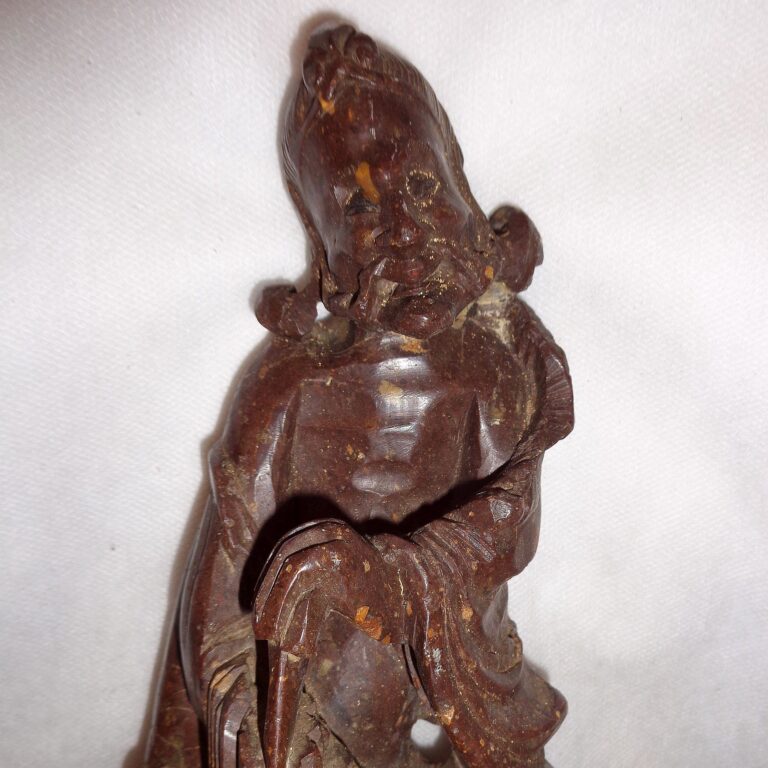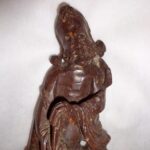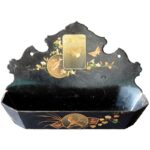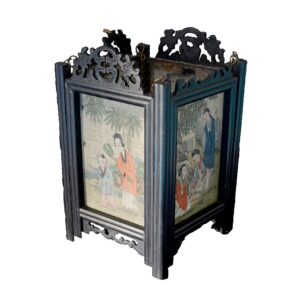Li Tieguai figurine
A tallow wood figurine of Li Tieguai 李鐵拐, standing on a base made of planed wood. Li Tieguai belongs to the Daoist group of the “eight immortals” (ba xian 八仙), legendary figures of Daoist masters who are said to attain immortality by mastering various techniques. Each of these eight immortals had their own atribute, a kind of talisman, with which they could help people. Li Tieguai, often referred to as the first of these eight immortals, is usually depicted as a crippled beggar leaning on an iron rod, hence his name Li Tieguai – Li with the Iron Rod. His depiction is based on the legend that his disciple accidentally burned his body and Li then found refuge in the corpse of a beggar. Although he is described as a person of serious character, irascible and quick-tempered, he appears as a benefactor who helps the sick and needy and relieves their suffering with the help of a special gourd medicine, which is why he is often associated with medicine. The ... more
A tallow wood figurine of Li Tieguai 李鐵拐, standing on a base made of planed wood. Li Tieguai belongs to the Daoist group of the “eight immortals” (ba xian 八仙), legendary figures of Daoist masters who are said to attain immortality by mastering various techniques. Each of these eight immortals had their own atribute, a kind of talisman, with which they could help people. Li Tieguai, often referred to as the first of these eight immortals, is usually depicted as a crippled beggar leaning on an iron rod, hence his name Li Tieguai – Li with the Iron Rod. His depiction is based on the legend that his disciple accidentally burned his body and Li then found refuge in the corpse of a beggar. Although he is described as a person of serious character, irascible and quick-tempered, he appears as a benefactor who helps the sick and needy and relieves their suffering with the help of a special gourd medicine, which is why he is often associated with medicine. The main attributes of his representation are the iron rod and the gourd hanging over his shoulders or held in his hands.
The figurine of Li Tieguai had a special meaning for Alma Karlin. It was given to her in Peru (perhaps it was made there), and the student who gave her the “devil” – as he called it – claimed that it was an ancient Inca treasure. The statue was the inspiration for her novel Der Götze [The Idol]. It was only in China that she then learned that the statue represented Li Tieguai. (HM, BT, NVS)





































Do you have a comment or additional information about the subject?